Protect Trunks from Human Invaders
Trees’ trunks come in all colors and textures. Once the trees lose their leaves we begin to realize there’s a lot of beauty to enjoy in their bark and growth form.
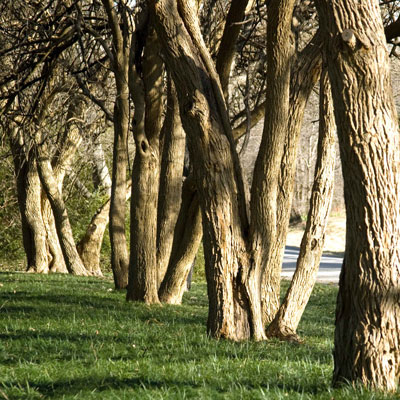
Photo: A barbed wire fence once ran along this row of old bois d’arcs on the edge of our property. I rejoice in the good looks of these trunks at this time each winter.
Some of the things we do to our trees…
Tree’s trunks, more specifically the layers of bark on those trunks, provide protection from mechanical injury.
Just inside the bark (outside to inside) are:
• The (1) phloem – conducts photosynthesized sugars from the leaves down to the roots to sustain life in the root systems;
• The (2) cambium – critical in the manufacture of new phloem tissues to the outside and xylem tissues to the inside; and
• The (3) xylem – makes up the bulk of the woody mass of the branch or trunk and conducts raw materials (nutrient elements and water) from roots up to leaves.
Where we go wrong…
So it’s obvious that the bark and the tissues just inside it are critically important.
When bark is gouged, cut or peeled the phloem and part or all of the cambium are lost. The flow of manufactured sugars from the foliage down to the roots is stopped and the plant usually dies.
You must do everything possible to protect that bark. Here is the horror show of things we do and allow to be done to injure that critical bark.
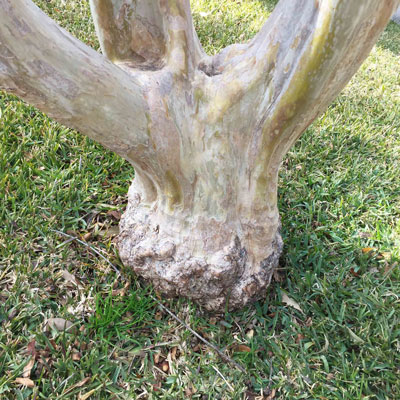
Photo: Someone needs to stop hitting this crape myrtle trunk with the line trimmer before permanent damage is done.
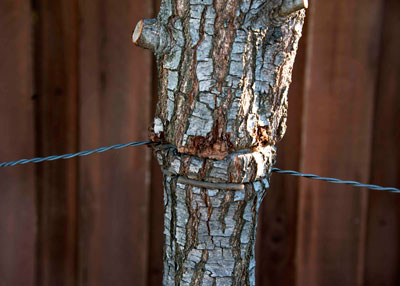
Photo: It’s probably too late to save this live oak’s trunk. The guy wires used to keep it upright were left in place far too long. The owner’s best hope would be that the tree would send out new sprouts from down below, one of which could be trained to be a new trunk. Note, too, how poorly the two branches were removed (leaving stubs), then see the hackberry photo below.
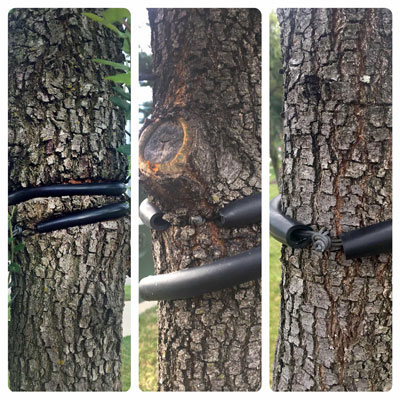
Photos: These live oaks have been ruined by a careless Metroplex-area landscaping crew that neglected to remove guy wires for years after the trees had become established.
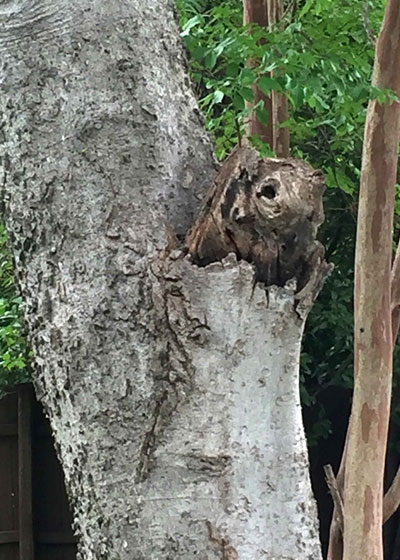
Photo: Bark will soon start to rot and peel away from this hackberry’s trunk due to the very poor job of pruning. You can see decay developing where the stub of the old branch was left in place. It wasn’t able to heal across the old stub.

It’s difficult to figure what the gardener was thinking when rope was allowed to stay in place so long that the tree’s trunk grew around it. It might be possible to remove the rope with a sharp knife. An arborist would best know what to do and how to do it.

It looks like Machine Gun Kelly took target practice on this pecan’s trunk. In fact, it’s the work of sapsuckers (woodpecker relatives). It presents no major harm to the tree, and their presence does not indicate presence of insects. Apply a light dose of pruning sealant. If it persists, consider a sticky product called Tree Tanglefoot to discourage the birds’ activity on the trunks without actually harming them.

Photo: Young tree’s trunk has been ravaged by exposure to intense summer sun. It should have been protected with paper tree wrap for first 24 months in the landscape.
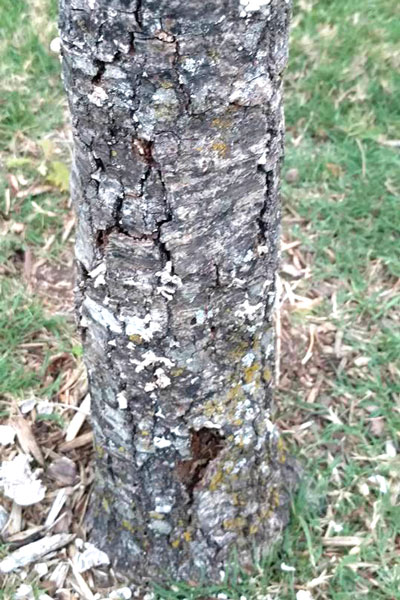
Photo: Bark is separating from larger red oak trunk after several summers’ exposure to sun. Bare, dried wood will be exposed and the entire tree has probably been lost. Again, wrapping could have prevented all of this damage.
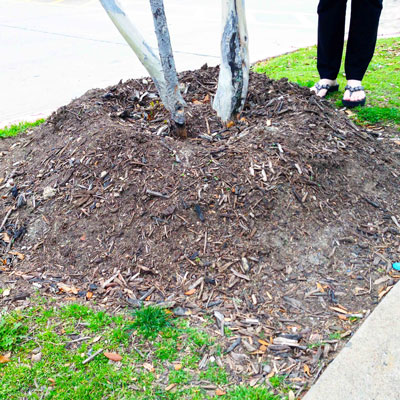
Photo: This is a gross application of mulch around a new tree. The tree’s root flare is completely covered. Rainfall and irrigation have a difficult time penetrating into the soil and down to the roots. This is a commercial landscape, and the laborers were perhaps disinterested in carrying the excess soil off-site. They concealed it with a layer of mulch instead. All of this mess should be removed.
